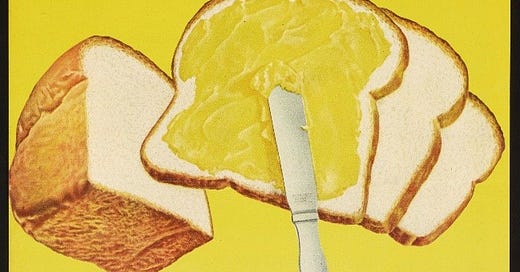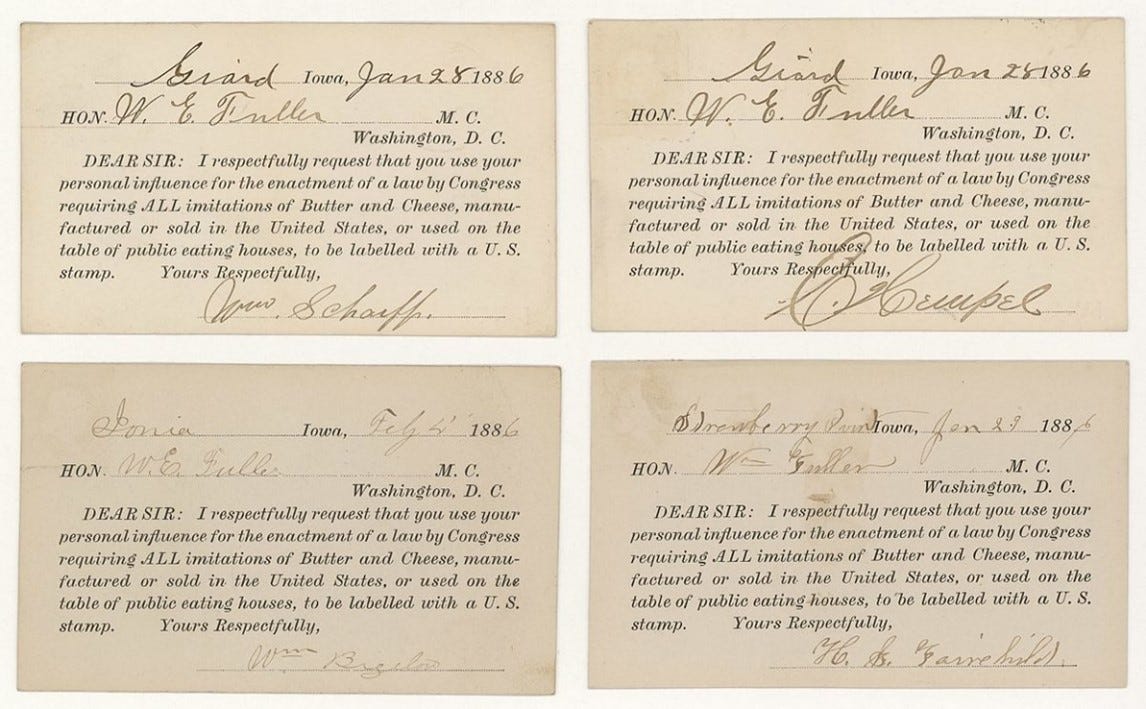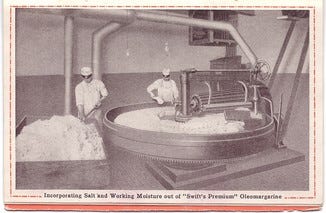Today is the start of National Dairy Month, a celebration that was originally created in 1937 to promote drinking milk. Therefore, it seems like the perfect time to look at an interesting piece of American history: the butter battle in the GAPE.
In the late 1860s, Emperor Napoleon III offered a prize to anyone who created a substitute for butter. The emperor knew such an alternative would be useful for his armies during the Franco-Prussian War. In 1869, French chemist Hippolyte Mège-Mouriès created “oleomargarine,” a combination of beef tallow (animal fat) and milk.
In 1873, this cheaper alternative to butter came to the United States. Margarine was naturally white in color, so manufacturers added dyes to make margarine look more yellow like butter. American dairy farmers were worried about how the new product might impact the industry, so they petitioned both their state legislatures and the US Congress to regulate the product with a high tax to lessen margarine’s popularity.
On July 23, 1886, Congress passed the Oleomargarine Act, which taxed margarine at two cents per pound (sixty cents per pound today). Ten days later, President Grover Cleveland signed the bill into law. Just regulating margarine, however, didn’t seem to be enough. States began to pass laws restricting the color of margarine, and, by 1898, thirty-two of the forty-five states prohibited manufacturers from coloring margarine yellow like butter.
A number of states even required margarine to be colored pink to indicate its artificiality, which became known as “pink laws.” In 1898, however, the US Supreme Court declared the pink laws unconstitutional, and for a brief time, margarine could be sold in any color, subject to the two cent per pound tax.
Less than five years later, dairy farmers petitioned Congress yet again to limit what colors manufacturers could use to dye margarine. In 1902, Congress passed an amendment to the 1886 Oleomargarine Act, issuing a higher tax of ten cents per pound on colored margarine ($3.36 per pound today) and reducing the current tax of two cents to one-fourth of a cent. In other words, colored margarine became cost-prohibitive.
Incorporating Salt and Working Moisture out of "Swift's Premium" Oleomargarine/Wikimedia Commons
Manufacturers soon came up with a creative workaround. They began including a capsule of a yellow color solution with uncolored margarine that would allow consumers to color their own margarine yellow like butter. This didn’t violate the 1902 amendment, and it allowed Americans to have a buttery yellow color for their margarine.
Taking the MYSTERY Out of MARGARINE/Kraft Foods Company/Courtesy of Science History Institute
Coloring margarine became a commonplace kitchen task well into the 1940s. Congress repealed the Oleomargarine Act in 1950, sixty-four years after it was first passed. However, Wisconsin, known for its dairy products, became the last state to repeal its restrictions on margarine in 1967. Roughly one hundred years after its arrival to the US, margarine had emerged victorious in the butter battle.








It's hard to beat butter sometimes though. Especially on biscuits and baked potatoes!